|
10/24/2019 Can Believers and Skeptics Agree on Something When It Comes to the Supernatural?Read Now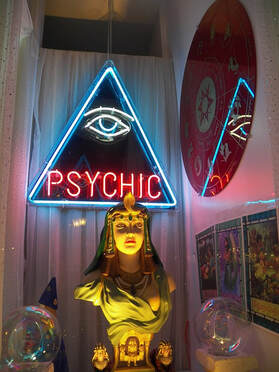 When it comes to the supernatural, believers and skeptics have a set of seemingly irreconcilable differences. Religious believers claim that faith healers can make miraculous healings happen. Believers in psychic phenomena claim that things like extrasensory perception (ESP) are real. Believers in spiritualism claim that the spirits of the dead can be contacted by individuals with special powers such as mediums. Skeptics however, point out that every time such occurrences have been investigated thoroughly, no evidence for their existence has been found. The disagreement between believers and skeptics has led to a lot of acrimony peppered with plenty of throwing up of hands, shaking of heads, and rolling of eyes. Can’t believers and skeptics agree on some things? 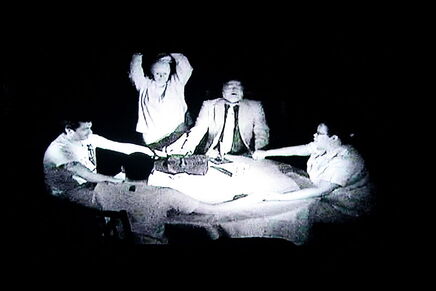 Seance Seance I think they can. For one thing, the vast majority of both believers and skeptics would agree that it is not ethical or moral for a fake faith healer, or psychic, or medium to deprive people of their hard-earned money through lies and trickery. There are many examples of such fakes. Many mediums in the United States in the 1920s were exploiting people’s pain over losing loved ones, tricking them into thinking they could communicate with their spirits. In the 1980s many psychics such as James Hydrick deceived people into believing they had supernatural powers. During this time period, the televangelist Peter Popoff was also active tricking people into believing he could cure them of their ailments through the power of God. In the 2000s psychics like Rosemary Altea fooled people into believing she could communicate with their dead relatives. In the 2010s, the psychic Maria Duval and her associates tricked as many as 1.4 million American, most of them elderly and sick, into sending money by mail in exchange for psychic help to heal their ailments or improve their economic situation. If a person is promised a service such as contacting their dearly departed, or the healing of a malady, finding love, improving their economic situation, or a peek into their future in exchange for their money, then said person is entitled to receive just what they were promised. This is a very basic and straightforward principle based on universal common sense notions of honesty. But this just leads us to the cause of the acrimony between believers and skeptics. By which procedure do we determine whether a faith healer, a psychic, or a medium is honest or fake in a manner that will be accepted by both sides? I don’t know a definite answer to this question, but I do have a suggestion regarding how stringent the procedure should be. Let me build my case for it. Let’s start with Penn and Teller. These guys are a fantastic duo of magicians. They have been in the business for decades. They have a huge knowledge regarding how magic is performed, and not only do they perform amazing tricks, but they also invent new ones. Penn and Teller have a show called “Fool Us” where they invite the best magicians in the world to try to fool them. In other words, to try to perform a magic trick for them that they can’t figure out how it’s done. Despite their experience and their knowledge, Penn and Teller have been fooled quite a number of times by other magicians such as Rebecca Herrera as shown in the video below. I am a scientist and a skeptic, and I consider myself smart. However, for the life of me I cannot figure out even how some of the most mediocre magicians do their tricks, let alone Penn and Teller or other world class magicians. However, as long as a trick is limited to its magic context, there is no problem. It’s all wonder, fun, and games. But in the moment a trick is removed from this context and performed as part of a séance, a psychic demonstration, or a faith healing event under the pretense that it is not a trick but a bona fide supernatural event, that is where the problem arises. Imagine if the magician Rebecca Herrera featured in the video above used her talents to try to convince people that she really has supernatural abilities. It would be too easy. We are all accustomed to dealing with nature, and nature does not lie, but when it comes to dealing with dishonest tricksters, the truth is that the vast majority of people are sitting ducks. When individuals witness things they cannot explain, many will be inclined to accept the reality of these things and jettison skepticism out the window, which will soon be followed by their money. This is especially true in the case of the most vulnerable such as those who have lost loved ones, or are facing difficult family situations, or are experiencing health problems. There are literally thousands of ways in which a dishonest person can fool others into believing they have supernatural powers. This often involves using very basic techniques to obtain information such as “cold reading” coupled to other more elaborate tricks such as those described in the video below from The Real Hustle series. Nowadays with the advent of the internet it is even easier to obtain personal information from individuals and present it as having been obtained by supernatural means. The performance of these tricks is safer for the performer if they are carried out within a religious context. This is due to the fact that any miracle that didn’t work can be blamed on weak faith. There are several people who have deserted the faith healing profession and they have revealed many of the tricks they use to dupe believers. In the video below by Derren Brown you can check some of them. So now let me get to my suggestion. Without suggesting to believers that ALL faith healers, psychics, or mediums are fake, I nevertheless want to posit that, because it is virtually impossible for regular folks like you or me to tell the difference between a trick and the real thing, you should set the bar for accepting that the powers of these characters is real very, very high. I would even recommend that before believing, you should get help from someone in the magical profession to identify any tell-tale signs of cheating. Do not try to do this yourself! Fake faith healers, psychics, or mediums can have decades of experience deceiving people. They will use their tricks, manipulate your emotions, and fool you. This is especially true if you WANT to believe. If we accept that there are liars and cheats out there, displaying skepticism is not a weakness in your capacity to believe or your faith. Rather it signals that you are prudent and discriminating in your beliefs, which is a good thing to be. Psychic picture from Pixabay is in the public domain. Séance scene from “Weird of What?” by Sgerbic is used here under an Attribution-ShareAlike 3.0 Unported (CC BY-SA 3.0) license.
2 Comments
On a trip to Florida, I visited the Washington Oaks Gardens State Park to check out the coquina rock formation on the beach. This type of rock, whose name is derived from the Spanish name for “shell”, is only found in a few places around the world, but it is plentiful in Florida. What makes this rock unique is that it is made up of millions of tiny shells that have been cemented together. If you inspect the rock you can easily make out the individual shells. The way this rock was made is that over thousands of years the small mollusks that made the shells died and through wave action the shells got sorted and deposited in ever deepening layers. When the sea receded, the layers of shells were exposed and rain percolating through the top layers dissolved some of the calcium in the shells and deposited it in the deeper layers gluing the shells together and forming the rock. The action of the waves erodes some areas of the rocks in a circular fashion creating pools of sea water. As the erosion of the rock progresses the bottom of the pools is breached, and this gives rise to round holes in the rocks. Besides its geological characteristics, the coquina rock in Florida is also interesting for historical reasons. Spain had founded the city of Saint Augustine on the East Florida coast in 1565. By the 1600s the Spaniards began fearing the British would invade the city, and they decided to construct a fort that still stands to this day called “Castillo San Marcos”. As the only rock they could find in the area was coquina, the Spaniards erected the fort employing this rock. So essentially the Spaniards built a fort made of shell fragments glued together by erosion to ward off a British invasion! The British attacked Saint Augustine on 2 occasions, in 1702 and 1740. They subjected the castle to heavy cannonball fire trying to breach its walls, but to their surprise, the castle walls did not shatter when hit by the cannonballs. Rather the cannonballs either bounced off the walls or were absorbed into the coquina rock and the castle held its ground against the invaders. It was only in 1763 that the British gained St. Augustine (and all of Florida) as a result of the treaty of Paris.
So what happened? How could rocks made out of glued seashells resist cannonballs fired at them? The impact response of coquina has been studied. Because of its make up, coquina is a very porous rock that deforms easily when something impacts against it. While other rocks experience brittle fractures and shatter as a result of an impact, coquina has a high capacity to absorb energy from projectile impacts. And this ability has not merely allowed the Castillo San Marcos to resist the British sieges, but it has also allowed the fort to resist hurricanes and tropical storms, and remain standing for more than 300 years. Not bad for a rock made out of glued seashells, eh? The photographs are by the author and they can be used with permission. Most of the discussion at the World Cup was about the games, the players, the teams, and the countries, but there are few comments about the entity that made it all possible. I am talking, of course, about the ball. For example, the design of the soccer ball is a highly technical endeavor that can dramatically affect the outcome of games depending on whether particular aspects of the way the ball travels when it’s kicked align better with a team’s style of play. Over the years many soccer balls have been designed for World Cup competitions with each type of ball having its defenders and detractors. However, for this post I want to concentrate on some particular spin effects that soccer balls can exhibit that are exploited by players, or that have led to occurrences that have forever been recorded in soccer lore. When the ball hits an obstacle it may acquire a spin. This fact has sometimes led to curious situations where a premature celebration of a penalty that was missed as a result of the ball hitting the goalpost or being deflected by the goalkeeper, ended in disaster when the ball made its way into the goal as a result of a forward spin. However, the most remarkable of these situations happens when the ball hits the underside of the upper beam of the goalpost acquiring a backward spin. If the ball hits the beam at just the right angle it will bounce down towards the goal line and then away from the goal. This occurrence has been responsible for some of the controversial goals (or non-goals) which have been dubbed “ghost goals”. One of the most famous ghost goals in history was scored by the British player Geoff Hurst during the World Cup final against Germany in 1966. German and British fans have not stopped arguing about whether this was a goal or not, and the Germans still think they were robbed of a chance at winning the World Cup. However, sweet revenge came to the German side in 2010 when in a World Cup match a goal eerily similar to Hurst’ 1966 goal was scored by Frank Lampard for the British side. Whereas the television cameras revealed that a goal had indeed been scored, the main referee and the linesman did not see the ball bounce inside the goal and did not call it. Britain eventually lost the game and its chance at winning the World Cup. As a result of this goal and other similar events the world’s soccer governing body, FIFA (International Federation of Association Football) has adopted a series of technological advances including goal line technology, which has made ghost goals a thing of the past, at least at the world cup level. The most impressive spin effects on soccer balls do not occur by happenstance. Imparting a spin on the ball when it is kicked, is an action taken by players to bypass a blockade from the other team, to fool the goalie, or to place the path of the ball towards the goal beyond the goalie’s reach. In doing so, the soccer players are exploiting a very well-known scientific principle called the Magnus effect, named after the German scientist Gustav Magnus who studied it. One way to explain the Magnus effect is to imagine that the soccer ball, as it travels spinning through the air after being kicked, possesses a thin layer of air that spins with it. On the side of the ball that is spinning in the direction of the movement of the ball, the molecules of this thin layer of air collide against the molecules of air blowing past the ball, and slow them down, creating an area of high air density and therefore high pressure. However, on the opposite side (the side of the ball spinning in the direction opposite to the movement of the ball) the air molecules in the thin layer collide with the air molecules blowing past the ball and speed them up creating an area of less air density and therefore low pressure. This pressure gradient creates a force that deflects the ball sideways in the direction of the spin. Some particularly spectacular applications of the Magnus effect involve free kicks. In the slow motion replays of the kicks below you can clearly see the ball curving through the air on its way to a smashing goal! But perhaps the greatest application of the Magnus effect involves the so-called “Olympic Goals” which are goals scored from corner kicks. These goals are not very common because of the difficulty of the angle, and the fact that goalkeepers and players usually take positions in front of the goal to defend against these kicks, but when they are scored they are an amazing sight to behold. Many players have mastered the art of spinning the ball in the right way to score goals that have become the stuff of legend, and names like Roberto Carlos, Beckham, Ronaldinho, Messi, Ronaldo, Maradona, Platini, and others have thrilled or are still thrilling generations of soccer fans. There are other issues regarding soccer balls that I have not touched in this post including the transition of air flow over the surface of the ball from turbulent to laminar after a kick, or the way the grooves of the ball and the roughness of the ball’s surface can affect its behavior. But I hope that from reading this post you have gained an appreciation for the lore and science behind the spin! Image by Gang65 modified and used here under an Attribution-Share Alike 3.0 Unported license. In the late 1700s there was a lot of discussion in scientific circles regarding whether light was a particle or a wave. It was then that a British scientist named Thomas Young designed a famous experiment to settle the matter. Young reasoned that if light were a wave, then two streams of light that interact with each other would generate an interference pattern. What is this? First let’s look at the behavior of water waves. In the simulation below (Figure 1) there are waves that originate on the left side of the image (each of the blue lines represents the crest of a wave, whereas the dark space in between is the trough). These waves hit the yellow wall which has one opening or slit. The part of the wave that makes contact with the slit passes through and moves on to the right side spreading out in a radial pattern. However, when there are two slits, the waves originating from the two slits overlap with each other. In those areas where the crest of one wave intersects the crest of the other, the wave is taller. In those areas where the crest of one wave intersects the trough of the other, they cancel each other out. And in those areas where the trough of two waves meet, the wave is deeper. The pattern they form is called an interference pattern (Figure 2). If you were able to continuously record the waves arriving at the right hand side, you would see a large central swell where the waves originating from both slits reinforce each other, flanked by troughs where they cancel each other out, followed by progressively smaller swells where the intensity of the reinforcement of the waves diminish as they spread out. It would look something like Figure 3. Young expected that if light behaves like a water wave, and were forced through two slits, it would generate a similar interference pattern. On the other hand, if light is made up of particles, the light particles would go through the slits in a straight line generating two distinct images on the right hand side (no interference pattern). I decided to try to perform this experiment to see what results I got, and you can too! When Young performed the experiment 217 years ago he used sunlight, but we will use a laser pointer. Additionally (see below), among other things, we will need a flat glass, a candle, a pin, and matches (not meant as a product endorsement, just matches we’ve had for almost 20 years and barely used). Light the candle and place it on a surface such as a plate and cover one of the sides of the glass with soot. Don’t put the glass in contact with the candle flame for an extended period of time like I did (my glass shattered)! Allow for some cooling in between intervals of exposure to the candle flame. I finally covered one side of my broken glass in soot (careful with those sharp edges if there are any). Shine the laser pointer into the soot-stained surface to make sure light doesn’t go through. Proceed to make single and double slits on the glass’s soot-stained surface with the pin. You can aid yourself with a magnifying glass. This is how my slits looked. In theory they should be straight and as close as possible to each other, but this is the best I could do. I took advantage of a wooden ornament to set up the glass. I ended up holding the laser pointer with my hand, but it’s better if you can hold it in place say with a clamp. Be mindful not to look at the laser pointer straight on, it can damage your eyes! I darkened the room and shone the laser pointer through the single and double slits in the glass into a wall some 15 feet away, and I had another person take pictures with a smart phone. So what were the results? When I shone the laser pointer through a single slit, I obtained the pattern below. So if I were to shine the laser pointer through the double slits, I would expect two such blobs of light next to each other, if light behaves like a particle, right? But when I shone the laser pointer through the double slits, I obtained this: Those blobs of light flanking the central one and decreasing in intensity towards the sides are characteristic of the interference pattern (see Figure 3) that you would expect if light behaves like a wave! Of course, my experimental setup and slit construction were rather crude. Physicists working with more sophisticated equipment can obtain much better patterns. So did Young’s experiment settle the argument? Unfortunately at the time some heavyweights in science such as Isaac Newton favored the particle theory, so Young’s double slit experimental result was slow to catch on. However, in the end things turned out to be more complicated than they seemed (they always do). Not only did light display the behavior of a particle in other experiments, but other entities besides light such as electrons and even some large molecules that no one would ever think of as a wave were found to exhibit both particle and wave behavior. Nowadays light is thought of as having a particle-wave duality (it can exhibit properties of both waves and particles but not at the same time). However, the ingenious experiment designed by Young was improved upon in modern times and ended up generating some of the remarkable results that form the cornerstone of the revolutionary theory that nowadays we call quantum mechanics. And I just performed this experiment in my living room, and you can too! Now, isn’t that cool? Single and double slit GIFs by Lookang used here under an Attribution-Share Alike 3.0 Unported license. Wave by Klaus-Dieter Keller modified and used here under an Attribution 3.0 Unported license. The center of mass is a very interesting concept. The center of mass of an object is a point in the object where its average mass is located. At this point the mass of the object on one side of the center of mass equals the mass of the object on the other side, so in principle the center of mass of an object is also its point of equilibrium. In other words, if you could place the object on top of a pivot at its center of mass, it would balance perfectly. The center of mass of symmetrical objects such as a bowling ball is at its center. However, the center of mass of an object such as a broom (an asymmetrical object) is on a section of the handle closest to the brush. The principle of the center of mass is a useful one in physics as it simplifies calculations regarding the trajectory of objects in space, and it has also been used in the arts to achieve great displays of balance. For today’s post I will focus on a very interesting property regarding the center of mass, and this is that the center of mass of an object can lie outside the object! Consider an object like a donut. The center of mass of a donut lies exactly in its middle, in other words in thin air! The same happens with the center of mass of other objects like boomerangs. Not only can the center of mass lie outside of an object, it can also shift if the object experiences changes in the distribution of its mass. Case in point: the human body. Many of the movements you perform on a regular basis such as lifting your arms, leaning, kneeling, sitting etc. change the center of mass of your body. In fact, some movements such as bending over can bring the center of mass outside your body. This property was instrumental for Dick Fosbury to obtain a medal at the 1968 Mexican Olympics in the high jump competition, and it changed forever the jumping style athletes use in this discipline. Back in 1963 when Dick Fosbury was in high school, most athletes performed the high jump employing jumping techniques like the straddle or the western roll that involved the center of mass of the body passing over the bar. Not being particularly successful with these techniques, Forsbudy experimented with different ways of jumping over the bar. One day he tried jumping over the bar facing away from it and bending his body into an arch as he passed over the bar. Not only did he clear the bar effortlessly, but he stunned himself by improving his personal record by 6 inches that same day! Over the next few years, as he transitioned from high school to college, Fosbury kept on training and improving his newly discovered technique which by then was being dubbed the Fosbury Flop. Even though Fosbury managed to gain a slot in the United States high jump team that was to compete in the 1968 Olympic in Mexico, his style of jumping was still considered a curiosity. But that soon changed. Pitted against opponents that employed the traditional straddle methods, Fosbury performed impeccably in one jump after another and cleared the bar in his first attempt every single time. Finally, when the bar was raised to 2.20 meters only 3 jumpers succeeded: Fosbury, his teammate Ed Caruthers, and a soviet jumper, Valentin Gavrilov. Gavrilov failed to clear the bar when it was raised to 2.22 meters whereas Fosburry and Caruthers succeeded and went on to attempt to clear the bar at 2.24 meters, which at the time was an Olympic record height. Whereas Caruthers failed in his attempt, Fosbury sailed over the bar to win the gold medal. In subsequent years only one jumper, Vladimir Yashchenko from the Soviet Union in the in the 1978 Olympics, succeeded in breaking a record using the straddle technique. The Fosbury Flop spread like wildfire throughout the sport of high jumping and was improved upon by many athletes. Today it is used universally and the record holder is Cuba’s Javier Sotomayor with an impressive 2.45 meters. So what is so remarkable about the Fosbury Flop technique? 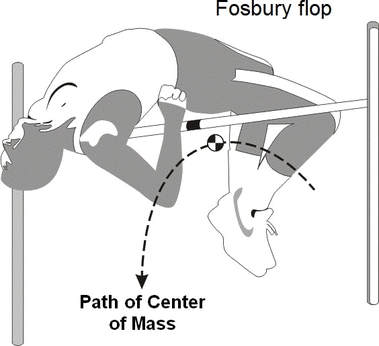 When Dick Fosbury devised this high-jumping style, he unknowingly exploited the ability of the human body to displace its center of mass towards the outside. In the physics of the high-jump, the launch speed that the jumper achieves when they jump will determine how far their center of mass can be propelled in the air. By bending the body backwards into an arch as it goes over the bar, the center of mass of the body goes below the bar as opposed to above the bar as happens with other techniques. This allows the athlete using the Fosbury Flop to spend less energy to achieve a given height and gives them an edge over athletes employing other jumping techniques. Thus Dick Fosbury’s win at the 1968 Mexican Olympics was not only a truly out of body gold medal (at least as far as the center of mass is concerned), but also an example of how exploiting scientific principles can improve athletic performance. Image by AlanSiegrist used under an Attribution-Share Alike 4.0 International license. Some scientific theories that are in the way of religious, political, and corporate interests have been getting a bad rap. These theories are claimed to be false by their foes. So for example, creationist claim that evolution is false, climate change deniers claim that global warming is false, and so on. In fact, many people seem to imply that theories are ephemeral, and to buttress their claim they offer a list of theories that have been proven “false”. Why should we rely on a scientific theory to affect public policy today if it can be shown to be false tomorrow? In addressing this issue there are several things we have to consider. Before we begin, we need to make the clarification that the word “theory” in the popular parlance can be a synonym for a guess or a very preliminary explanation. In science, a theory is a vastly more stable form of knowledge. In fact, if the theory is sufficiently developed, it in itself can become a fact. So what are the characteristics of a sufficiently developed theory? They are: 1) It explains the existing observations and experimental results. 2) It has generated predictions that have been found to be true. 3) It has generated practical applications that work. 4) Results from other scientific disciplines corroborate the theory and the theory corroborates results in other scientific disciplines. Please read the list above again carefully. Don’t you think that when a theory fulfils these characteristics we can say with confidence that it has clearly grasped important aspects of the realities it’s trying to explain? But, you may ask, what if a genius like an Einstein comes along and thinks up a new interpretation for everything the theory explains and predicts, and expands it into a different theory to explain new things? Can’t we say then the theory was proven false? 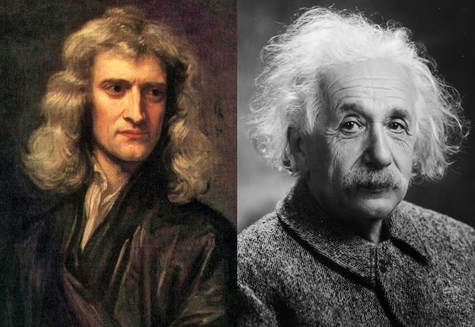 Well, let’s consider what Einstein did. He reinterpreted Newton’s laws of gravitation and motion, and came up with explanations for phenomena the Newtonian interpretations could not explain. Einstein thus relegated Newton’s laws to particular cases where velocities are much lower than that of the speed of light or when very strong gravitational fields are not involved. But here is the thing: the speeds at which planets, rockets, space probes, and objects in everyday life move, and their behavior in the gravitational fields that they encounter most of the time, can be described with a satisfactory level of accuracy by Newton’s laws. The existence of a planet (Neptune) and the return of a comet (Halley’s Comet) were predicted using Newton’s laws. The life of astronauts and the integrity of multimillion dollar space probes depend on the veracity of the calculations employing Newton’s Laws. Is it fair to say that Einstein proved Newton’s theories were false? Of course not! Einstein showed Newton’s theories were incomplete, and this is what the public has to understand when discussing scientific theories. Sufficiently developed scientific theories cannot be false, they can only be incomplete. When assessing scientific theories, it is counterproductive to talk in terms of true or false. What has to be discussed is whether a theory has been formulated at a high enough level of detail, in other words, whether the theory is complete enough. We don’t need theories to be 100% true. They can’t be (nothing can), and they don’t have to be. We only need the theory to be complete enough to be useful for society. Finally, it must be pointed out that the vast majority of scientific theories are not “big name” theories such as the theory of evolution or global warming. There are hundreds of scientific fields and subfields that have given rise to thousands of theories most of which are boring, highly technical, and devoid of importance to the “culture wars”. Therefore they do not make the news, and non-scientists are not even aware of them. Most of these theories have never been overturned, and in fact form the basis of modern science leading to tens of thousands of practical applications and policies. If these theories were not sufficiently complete representations of reality, modern life would not be possible! So next time you are pondering the worthiness of a scientific theory, remember, it's all in the completeness. The figure is a collage of a copy of a painting of Isaac Newton by Sir Godfrey Kneller (1689), which is in the public domain, and a photograph of Albert Einstein by Orren Jack Turner obtained from the Library of Congress, which is also in the public domain because it was published in the United States between 1923 and 1963 and the copyright was not renewed. Scientific discoveries, even important ones, are normally published in specialized journals, and then it’s mostly up to the public relations people, journalists, bloggers, and other pundits to step in, simplify the story, and distill the meaning and importance of the findings through printed, electronic, or televised media letting the public know how “exciting” these findings are. When these discoveries are presented to regular folk, there are no strobe lights, stage fog, explosions, or musical backgrounds. Most of the time there is no show, no drama, no razzle-dazzle. In an age when the attention of the public is only captured by some of the most eye catching, awe inspiring, or just plain outrageous antics and theatrical gimmicks, for the average person science comes across as a pretty boring enterprise. That is not to say that established science can’t be presented in an interesting and exciting way that captures our attention. What I am talking about is science as it happens. Those WOW! moments, those instants in science where something new is discovered or thought about on the spot. Some past WOW! moments that come to mind are the discovery of the correct pairing between the bases of DNA by James Watson, the discovery by Alexander Fleming of the substance secreted by a mold that killed bacteria in a culture (penicillin), the discovery of X-rays by Wilhelm Conrad Rontgen, the discovery of right and left handed crystals of tartrate by Louis Pasteur that gave rise to the discipline of stereochemistry, and the discovery of the periodicity of the elements by Dmitri Mendeleev (periodic table). However, WOW! moments in science are often private affairs (things that happen in the solitude of a lab or an office), and the raw science involved would not be readily understood by any non-scientist bystanders at the time. Unfortunately, the closest we can get to viewing such moments are documentaries or movies where the original scientists, or actors playing those scientists, recount or reproduce the science for a film crew. This often takes place years after the fact. But there is one particular WOW! moment that comes to my mind that was televised live, although to be fair it was a reenactment of something the scientist had discovered a few hours before on his own.  In 1986 the space shuttle Challenger blew up after takeoff, killing 5 NASA astronauts and 2 payload specialists, one of whom was to be the first “teacher in space”, Christa McAuliffe. A presidential commission (the Rogers Commission) was formed to investigate what led to the Challenger disaster, and this commission included the Nobel Prize winning physicist Richard Feynman. Feynman, who had one of the keenest minds of the 20th century and who had tackled some of the great problems in physics, also was a down to earth regular kind of guy who could talk to regular people and understand their problems. His “no bullshit” attitude soon made him a pain for the committee directors. While the members of the committee were in Washington listening to presentations by NASA executives, Feynman was down in Cape Canaveral mixing with the regular engineers and technicians. He soon found out that there was a disconnect between management and their underlings. As it turns out, many of the shuttle launches which were presented by NASA executives as “safe” had really been precarious, with several things going wrong that could have doomed the missions. Up to the launch of Challenger, NASA had just been lucky. One particular area of concern were some rubber seals called O-rings which were intended to plug the joints between the segments of the shuttle’s solid rocket boosters. If these seals failed, the gases inside the booster could leak out disrupting the structure. For their correct functioning, the O-rings had to be resilient. Feynman’s approachability and capacity and desire to understand the truth allowed individuals within the hierarchy of NASA and their contractors to anonymously relay information to him that there had been issues with the O-rings in several flights, and that the possible lack of resiliency of these seals at low temperatures was a particular concern. This was significant as the day Challenger was launched had been one of the coldest among all the shuttle launches. Feynman proceeded in true scientific fashion to perform an experiment. He obtained a clamp at a hardware store, twisted a piece of an O-ring sample, and dunked it in an ice water glass to simulate the temperature of the morning of the Challenger launch. After a few minutes when he removed it and released the hold of the clamp, the O-ring failed to return to its previous shape for several seconds. This indicated that at cold temperatures the O-ring became stiff: it lost its resiliency.
Several hours later at a conference with all the cameras aimed at him (you can see Feynman talking at 1 min and 57 seconds in the video) he reproduced his experiment demonstrating that the O-ring loses its resiliency at cold temperatures and ended his demonstration with the understatement “I believe that has some significance for our problem.” Here is the WOW! moment that reveals the essence of science for all to see. And no lab filled with an army of technicians and postdoctoral and graduate students, or multimillion dollar grants, or fancy and expensive high tech equipment was required: just a man, a clamp, and a glass of ice water. That is all it took to solve the problem of why the Challenger shuttle exploded and expose the folly of an organization that had pushed forward ignoring critical safety problems that led to the death of 7 humans beings. All of this is even more remarkable if you consider that Dr. Feynman was battling cancer at the time he performed his work for the Rogers Commission. He died on February 15, 1988. His account of the investigation of the Challenger disaster and other stories are presented in his book "What Do You Care What Other People Think?": Further Adventures of a Curious Character. The image of the Challenger shuttle taking off by NASA is in the public domain. |
Details
Categories
All
Archives
June 2024
|
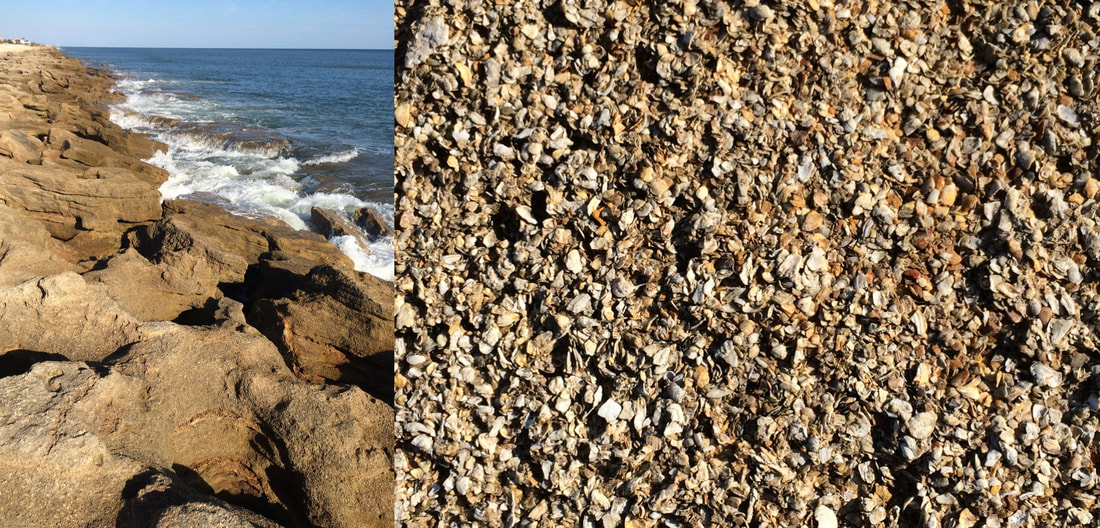
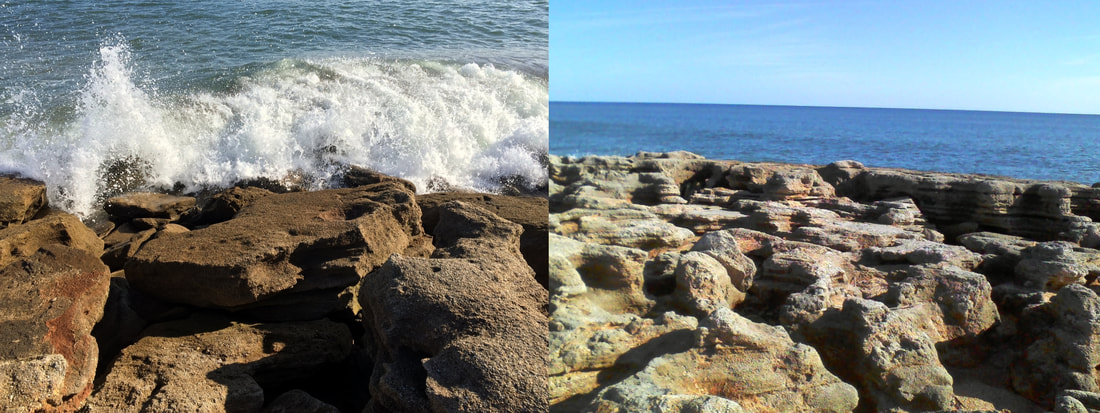
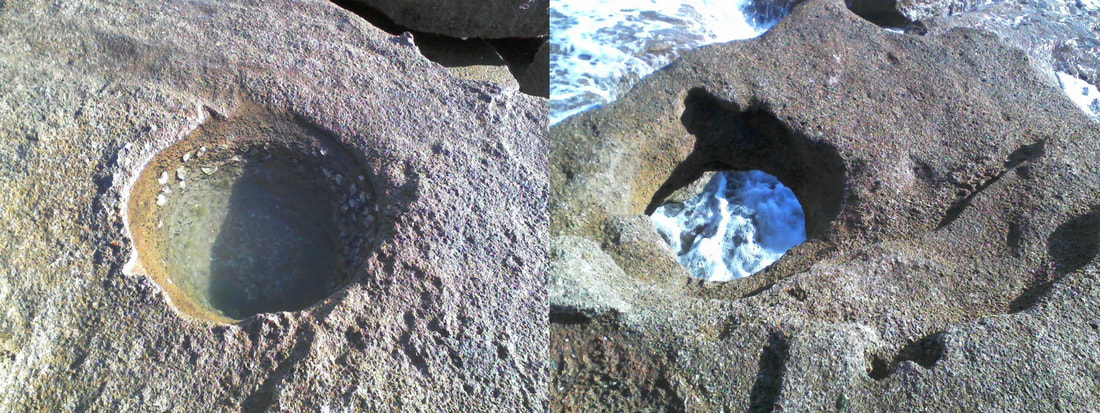
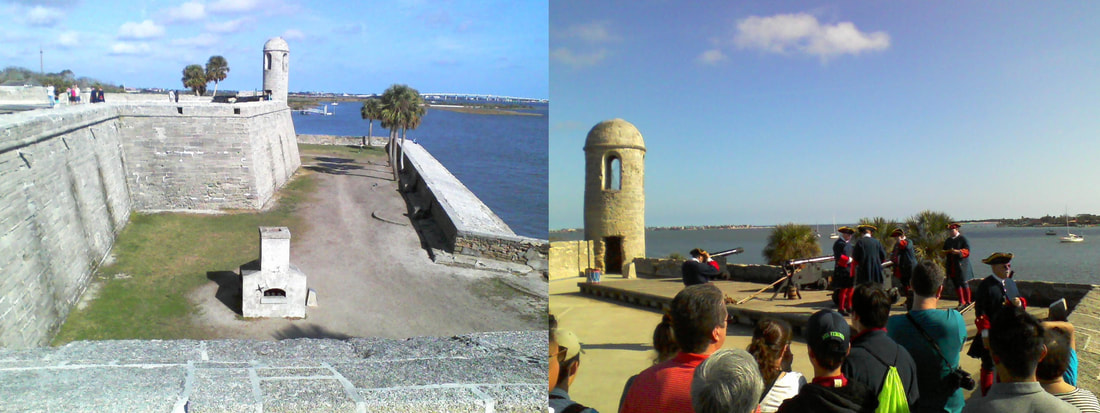
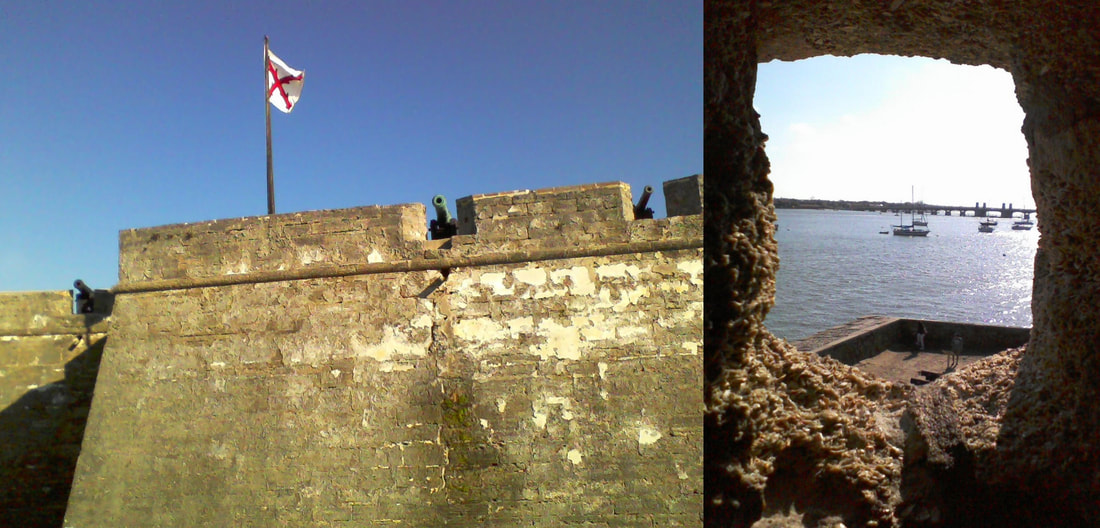
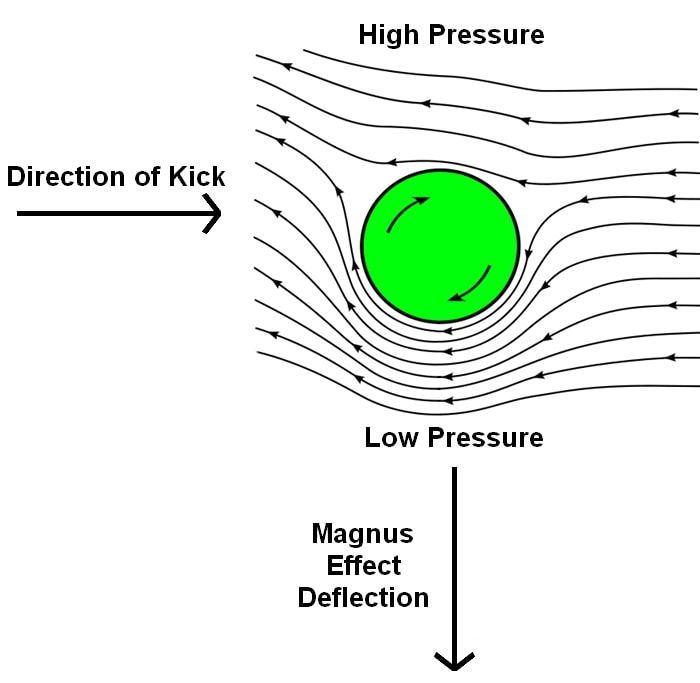
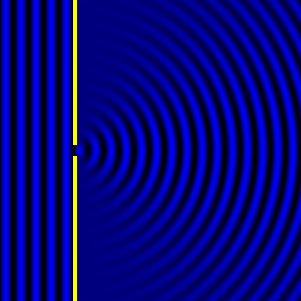
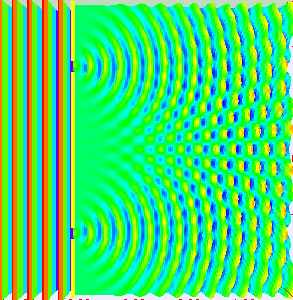
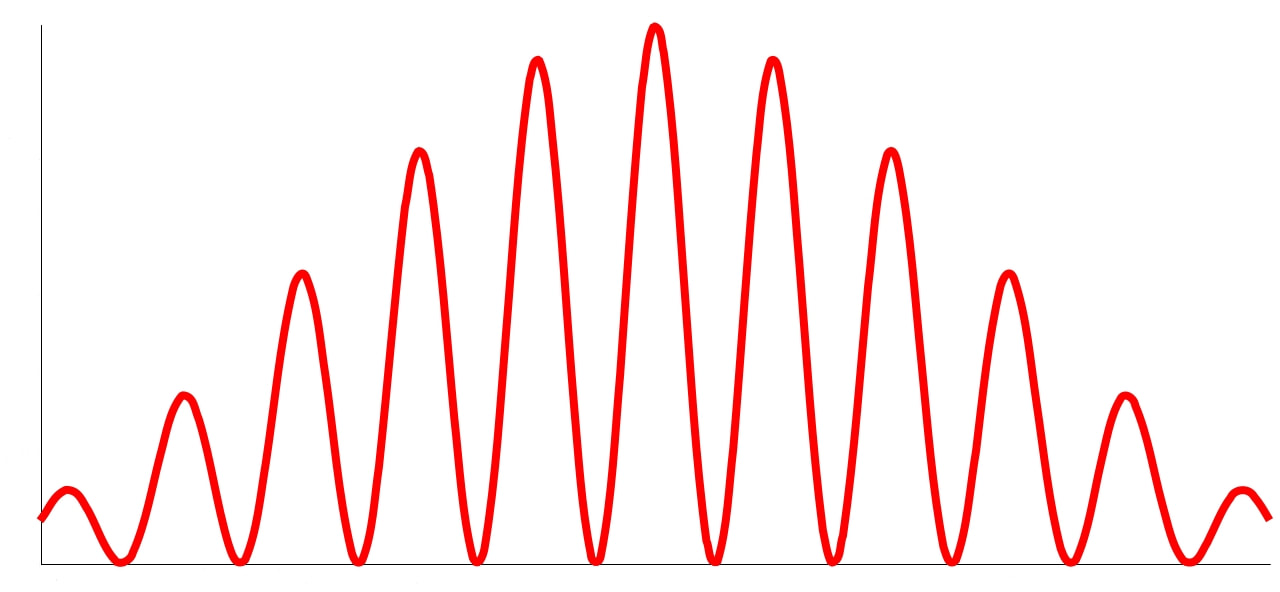
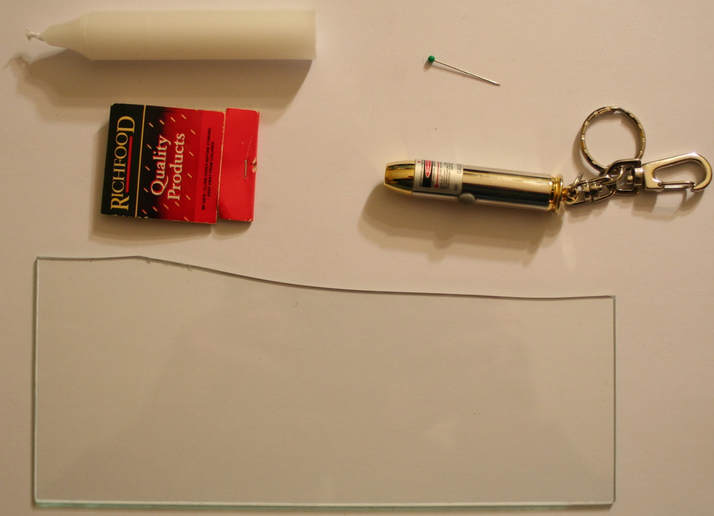
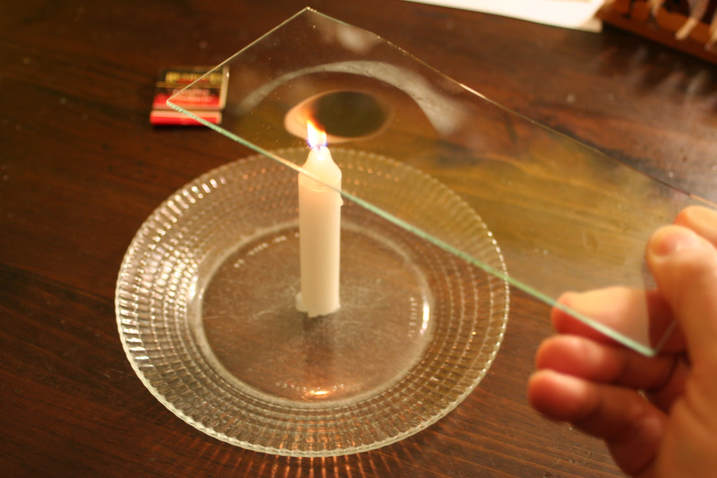
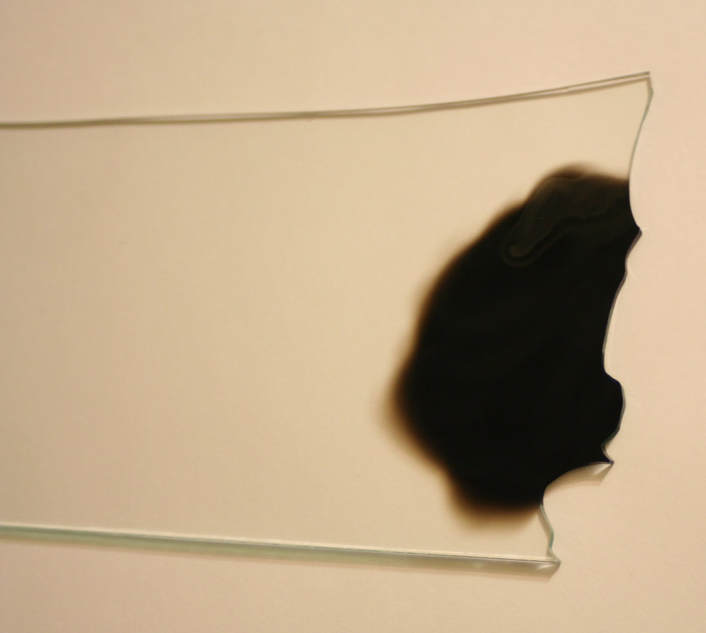
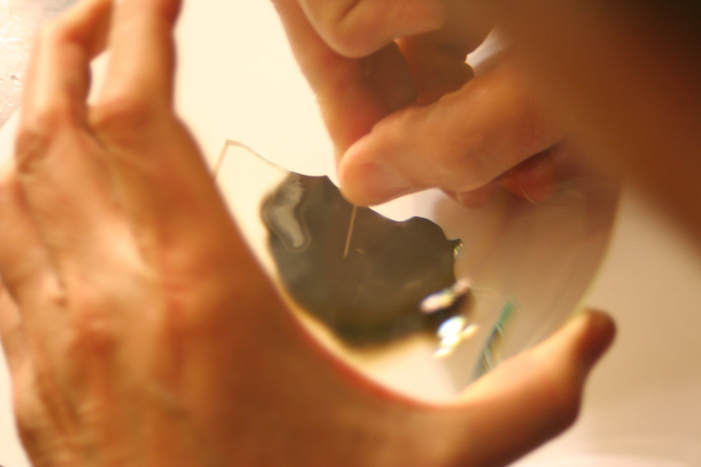
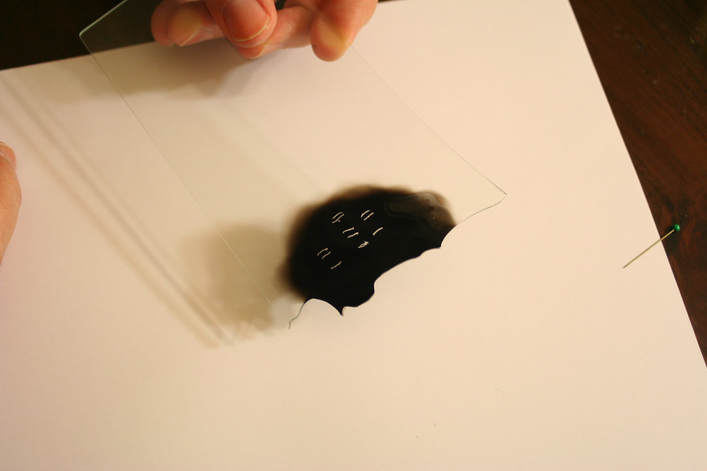
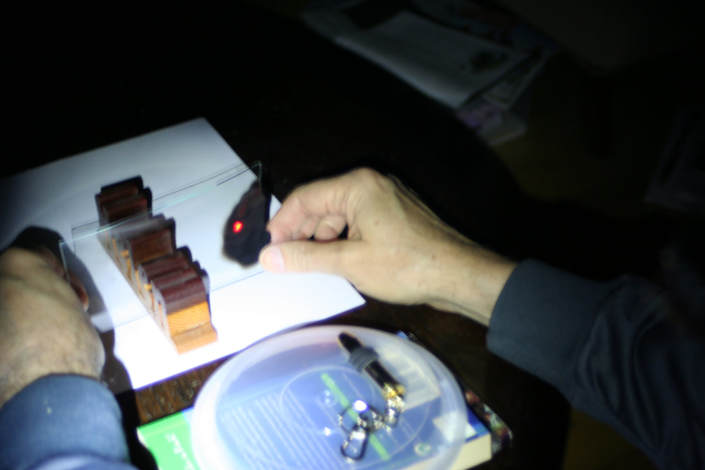
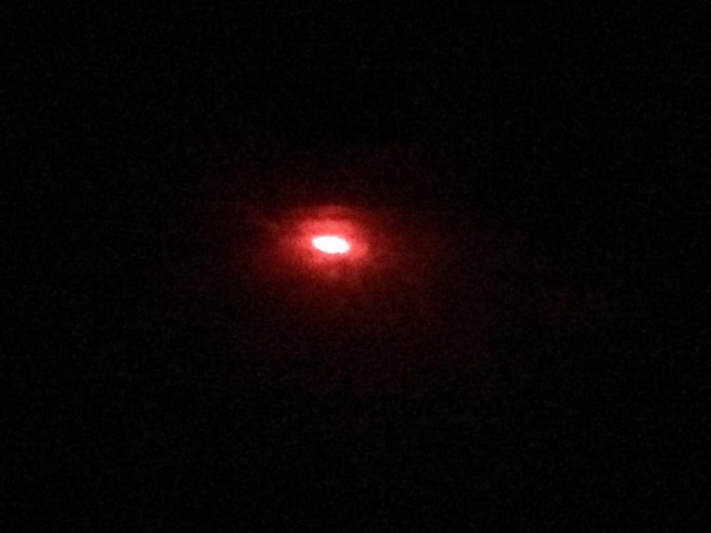
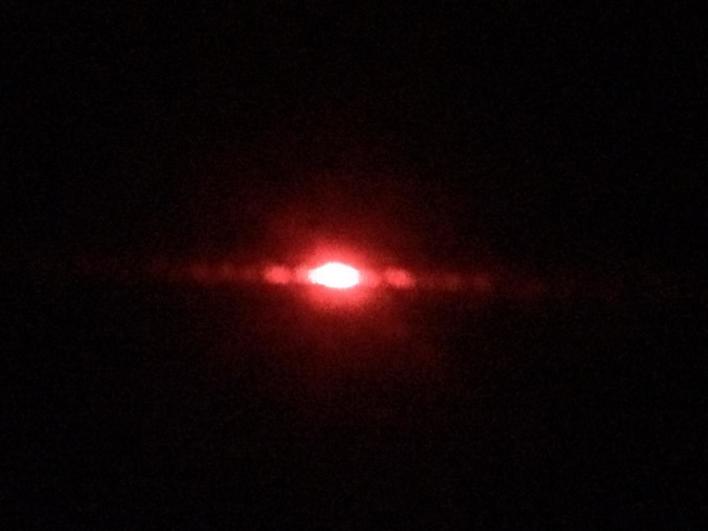
 RSS Feed
RSS Feed